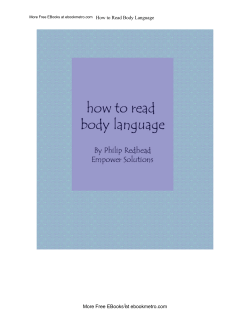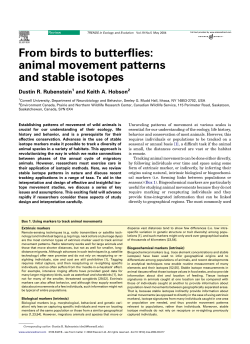
GEOCHRONOLOGY
GEOLOGY – Vol. I - Geochronology - Villa, Igor M. GEOCHRONOLOGY Villa, Igor M. Institut für Geologie, Universität Bern, 3012 Bern, Switzerland Dipartimento di Scienze Geologiche e Geotecnologie, Università di Milano Bicocca, Milano, Italy Keywords: Geochronology, Isotopes, Radioactivity, Mineralogy, Metamorphism, Recrystallization, Ages, Dating, Radiocarbon, C-14, K-Ar, Ar-Ar, U-Pb, U-series, Isochron, Plateau, Concordia, Disequilibrium, Microtextures, Geohygrometers Contents U SA NE M SC PL O E – C EO H AP LS TE S R S 1. The age equations 2. Isotope ratios and isochrons 3. Dating metamorphic rocks 4. Summary of dating methods 4.1. Rb-Sr 4.2. Sm-Nd 4.3. Lu-Hf 4.4. La-Ce(-Ba) 4.5. Re-Os 4.6. K-Ar(-Ca) 4.7. U-Pb and Th-Pb 4.8. Other U decays: U-He and fission tracks 4.9. U series disequilibrium method. 4.10. Radiocarbon (14C) 5. Conclusions Glossary Bibliography Biographical Sketch Summary Geochronology is the science of determining the age of a mineral by measuring radioactive and radiogenic isotopes. The prerequisite for most dating experiments is detection of the radiogenic daughter isotope. This usually recommends selecting minerals that have highest concentrations of radioactive parents. As the initial concentration of the daughter isotope is unknown, it is necessary to analyze at least two cogenetic minerals. A regression through the data-points will give a line, termed isochron, if and only if all analyzed samples were in mutual isotopic equilibrium. Controlling the goodness of this assumption, and thus assessing the accuracy of an age assignment, is possible by examining the statistical dispersion in an overdetermined regression (3 or more data-points). Modern high-resolution analyses show that isotope equilibration, which in the past had been assumed to be common, is actually often lacking in magmatic and especially metamorphic rocks. ©Encyclopedia of Life Support Systems (EOLSS) GEOLOGY – Vol. I - Geochronology - Villa, Igor M. Among the most widespread applications of geochronology are dating Quaternary events and dating old (metamorphic) crust. These two disciplines make use of different isotopic systems and face different problems. In Quaternary geochronology, discriminating minute amounts of radiogenic daughter isotopes is mainly a problem of analytical precision. U SA NE M SC PL O E – C EO H AP LS TE S R S While an apparent age always results from mathematical equations, its geological interpretation can be difficult. When dating crustal events, successful approaches require establishing a context among different isotope systems, and even more importantly, between mineralogy, microtextures, microchemistry, and isotope record. Understanding the mechanisms of isotope transport at the atomic scale is now necessary to understand metamorphism and alteration. Electron microscopy reveals that many minerals consist of mixtures at the sub-µm scale. Minerals can be intergrown with their retrogression products, and/or can contain unequilibrated relics. Lack of chemical homogeneity is due to low diffusivity under anhydrous conditions. Modern, direct determinations of dry diffusion in minerals yield rates that are orders of magnitude slower than was thought twenty years ago. By contrast, water enhances element and isotope mobility, both in experiments and in natural systems. It is a fact that availability of water, not temperature, is the principal factor controlling isotope transport; one should view the isotope record of a mineral as a geohygrometer. Water accelerates recrystallization, which effects isotope reequilibration. In the absence of recrystallization, petrographic relics ensure isotopic inheritance. 1. The age equations Isotopic geochronology is a discipline that endeavours to understand the timing of geological processes and their rates. It is based on the natural occurrence, in almost all terrestrial rocks, of radioactive nuclides. It is also closely related to isotope geochemistry, which studies the fingerprinting of geological processes. Knowing the present-day concentrations of the radioactive parent nuclide, M, and of the radiogenic daughter, F, the initial concentration of the daughter isotope, F0, and the half-life (or the decay constant λ, defined as λ = ln2/half-life) of the parent nuclide, it is possible to calculate the time interval t during which the daughter has been accumulating: t= 1 λ × ln(1 + F − F0 ) M (1) Basing on this simple age equation, the first successful age determination was performed by Rutherford in 1906 by measuring U and He concentrations in a pitchblende sample. The age he obtained, 500 Ma (millions of years), was the decisive argument in ruling out Lord Kelvin's view that the Solar System could be no older than 40 Ma. A list of the nine radioactive nuclides most frequently used in dating terrestrial samples is given in Table 1a. These nuclides have half-lives sufficiently long to have survived ©Encyclopedia of Life Support Systems (EOLSS) GEOLOGY – Vol. I - Geochronology - Villa, Igor M. since the last galactic nucleosynthetic event preceding Solar System formation, and sufficiently short to produce measurable amounts of daughter isotopes. There exist other radioactive nuclides with even longer half-lives; the accumulation of their radioactive daughters since the formation of the Solar System is negligible and these nuclides are not used as geochronometers. Parent nuclide daughter nuclide half-life 40K 40Ar 87Rb 87Sr 138La 138Ce 147Sm 143Nd 176Lu 176Hf 187Re 187Os 232Th 208Pb 238U and 4He 207Pb and 4He 206Pb and 4He 1.25 49 97 106 37 46 14.0 0.704 4.47 Parent nuclide daughter nuclide half-life 3H 3He 10Be 10B 14C 14N 26Al 26Mg 36Cl 36Ar 210Pb 210Bi 226Ra 222Rn 230Th 226Ra 231Pa 227Ac 234U 230Th 0.012 1510 5.73 716 301 0.022 1.6 75 33 245 or 40Ca U SA NE M SC PL O E – C EO H AP LS TE S R S or 138Ba 235U Table 1. (a) The most widely used radioactive decay systems used in geochronology. The half-lives are indicated in Ga (billions of years). (b) The most widely used radioactive decay systems used in Quaternary geochronology. The half-lives are indicated in ka (thousands of years). Nuclides with half-lives shorter than about 100 Ma have totally decayed since the accretion of the Earth. However, a few of them are constantly replenished and can be used for dating young geological events. Two mechanisms for replenishment operate. Light nuclides (Table 1b) are made by the interaction of cosmic rays with suitable target nuclides: nitrogen in the upper atmosphere is the main target nuclide for the production of 3He, 10Be and 14C; 26Al is produced from Si, Al and Mg in rocks in the uppermost 2 m of the Earth's surface by primary and secondary cosmic rays that managed to cross the atmospheric shielding; 36Cl is analogously produced from K and Ca in rocks, and also from 36Ar in the upper atmosphere. ©Encyclopedia of Life Support Systems (EOLSS) GEOLOGY – Vol. I - Geochronology - Villa, Igor M. The age equation for these short-lived systems is based on the ratio of initial parent nuclides, M0, to M(t), the parent nuclides surviving at time t: t= 1 λ × ln( M0 ) M(t) (2) M(t) can be measured by mass spectrometry or by alpha/beta/gamma counting; M0 can be estimated from the abundances of target nuclides, the relevant production rates, and the knowledge or modeling of past cosmic ray intensity. U SA NE M SC PL O E – C EO H AP LS TE S R S The second replenishment mechanism is relevant for the five heavy nuclides in Table 1b, which are intermediate decay products of long-lived U before the stable daughters 206Pb and 207Pb are reached. The general form of the decay equation for these so-called "U series nuclides" is complex and has only a numerical, but no analytical, solution. In paragraph 4.9 we will only discuss the simplified systematics as required for the most widespread application of U series dating, viz. dating of Quaternary carbonates (speleothems and corals). 2. Isotope ratios and isochrons The convention among most geochronologists is to indicate a "dating method" by indicating the parent and daughter nuclide, in that order: it is usual to refer to the K-Ar, Rb-Sr, etc., methods. From Table 1 it can be seen that most of the radioactive parents are trace elements, whose concentrations in whole rocks are generally quite small. As the precision of the dating increases with the concentration of the daughter isotope, it is very desirable to perform a dating experiment on minerals, choosing those that fractionate the parent/daughter ratio towards high values. The age equation requires the accurate knowledge of F0, the concentration of the daughter isotope that the mineral had at the time when the radiogenic isotope started accumulating. In some instances, it is legitimate to neglect the uncertainty deriving from assuming a slightly incorrect F0. This is done in the U-He and K-Ar dating methods, which assume that rare gases are never incorporated in a newly formed mineral, and in U-Pb dating of old zircons and other U-rich minerals, under the assumption that divalent Pb cannot substitute for the same major element as does tetravalent U. However, in all other instances it is incorrect to assume a value for F0 a priori, and it becomes necessary to accurately estimate it. In order to reconstruct the isotopic composition in a mineral at a time inaccessible to us now, it is necessary to resort to an indirect argument. Consider a well-stirred magma, which has stayed totally molten for a sufficiently long time to have achieved complete isotopic equilibrium. When the magma solidifies, all minerals have the same amount of F0 relative to some other isotope of the same element (the so-called "common isotope", denoted as C): the F0/C ratio is the same for all. In principle, isotopic ratios can be modified by fractionation. This is well known for the case of oxygen, whose permille variations of isotopic composition are used as a ©Encyclopedia of Life Support Systems (EOLSS) GEOLOGY – Vol. I - Geochronology - Villa, Igor M. U SA NE M SC PL O E – C EO H AP LS TE S R S geothermometer, with applications ranging from climatology to hydrothermalism to contact aureoles. The mass fractionation of any atomic species among two different molecules is a function of temperature and of the relative mass difference between fractionating isotopes. In practice, most of the decay systems listed in Table 1a are not affected by a detectable fractionation due to at least one of the following reasons: the relative mass difference between F0 and C is so small that the fractionation is of the order of a few parts per million (ppm), and is either undetectable or not significant for the age calculation; the temperature of the geological process being dated, magmatism and high-grade metamorphism, is so high that fractionation factors are below detection/significance limits. Thus, it can be said that the only significant modification of the isotopic ratios of elements relevant for geochronology is by radiogenic ingrowth. While F0/C is constant at equilibrium, the partition coefficients for the two-element pair ensure that in every mineral the M/C ratio is different. Thus, at the time of magma solidification, the crystallizing minerals define a horizontal alignment in an isochron diagram such as that shown in Figure 1. As time passes, parent nuclides decay (i.e., the M/C ratio decreases) while at the same time daughter nuclides, F*, are formed (i.e., the F/C ratio increases, whereby F = F0 +F*). Data-points representing the minerals move upward and to the left in Figure 1. As the number of daughter nuclides is proportional to the number of parent nuclides F * (t ) = M (t ) × (eλ t − 1) , the increase of the F/C ratio is proportional to that of the M/C ratio, whereby the F*/M ratio is constant for all points that are isochronous (have the same age). These points having the same age define a straight line called an isochron line, given by y = y0 + bx (3) where x = M/C , y = F/C , y0 = F0/C , and b = e λt − 1. Figure 1. An isochron diagram is any diagram in which isochronous (a Greek word meaning contemporaneous) samples define a straight line. In the example shown here, ©Encyclopedia of Life Support Systems (EOLSS) GEOLOGY – Vol. I - Geochronology - Villa, Igor M. the abscissa is proportional to the concentration of the parent nuclide, and the ordinate to that of the daughter nuclide. Each mineral forming the initial equilibrium assemblage lies on the horizontal dashed line. As time passes, parent nuclides decay while at the same time daughter nuclides are created. The isotopic evolution of each mineral can therefore be represented by a trajectory towards the upper left (dotted arrows). Because the concentration of radiogenic daughters, F*, is only a function of time and the concentration of parents, in a set of isochronous minerals the ratio F*/M is constant and the points define a line with slope b = exp (λ t) - 1. U SA NE M SC PL O E – C EO H AP LS TE S R S The requirement of complete isotopic homogenization is less obvious than its proponents about forty years ago had imagined. In anatectic magmatic rocks, partial remelting of the crustal protolith is not always sufficient to reset all minerals to equilibrium. It is of paramount importance, when dating magmatic rocks, to ascertain whether the microtextures only reflect growth from a melt, in which case isotopic equilibration may be expected, or if petrographic relics have been preserved, causing isotopic inheritance. In this case, the whole-rock system (i.e., the sum of all rock-forming and accessory minerals) does not represent the magma from which the minerals crystallized and must not be regressed together with them to obtain an isochron because the inferred age would be inaccurate. A special cause of concern is the fact that several of the radioactive parents listed in Table 1a are high field strength elements (HFSE), which have the tendency to form accessory minerals in which bonds are extremely strong, considerably more than those of the more abundant minerals such as pyroxenes and feldspars. We shall discuss below the influence of bond strength on isotope systematics; it will be sufficient to note that such HFSE accessory minerals are very resistant and hence very likely to survive partial melting events. The analytical improvements over the last 40 years allow us to recognize small but significant deviations from ideal behavior. Therefore, the most reliable isochrons are the overdetermined ones, i.e., those formed by three or more independent points; by allowing a statistical examination of deviations, it is possible to test the isochrons for internal consistency. If data points lie off the regression line by more than their analytical uncertainty, presumably they record a significant geological process which differs from that defined by the other data points, and it is an obligation for geochronologists to try and understand the cause of such scatter. The possibility to detect systematic departures from ideality thanks to improved instruments raises the philosophical question of the difference between precision and accuracy of an analysis. Precision only mirrors random errors, i.e., expresses the likelihood that a duplicate analysis of the same material will reproduce the obtained value within some interval (the analytical uncertainty); accuracy is only affected by systematic errors, i.e., reflects whether a calculated value is right or wrong. Accuracy is thus an undecidable property in the mathematical sense: it cannot be ascertained in the framework of the edifice from which it was derived and its validation requires criteria external to that edifice. ©Encyclopedia of Life Support Systems (EOLSS) GEOLOGY – Vol. I - Geochronology - Villa, Igor M. - TO ACCESS ALL THE 28 PAGES OF THIS CHAPTER, Visit: http://www.eolss.net/Eolss-sampleAllChapter.aspx Bibliography U SA NE M SC PL O E – C EO H AP LS TE S R S Buseck P.R. (1992). Minerals and reactions at the atomic scale: Transmission electron microscopy. Reviews in Mineralogy 27, 1-508. [The reference book on the state of the art in mineralogy: what are "minerals" like when viewed with a 1 nm resolution? Essential reading]. Cherniak D. (2000). Pb diffusion in rutile. Contributions to Mineralogy and Petrology 139, 198-207. [Experimental work finds smaller and smaller diffusivities for isotopes in minerals]. Christensen J.N., Halliday A.N., Lee D.C., Hall C.M. (1995). In situ Sr isotopic analysis by laser ablation. Earth and Planetary Science Letters 136, 79-85. [Spatial resolution demonstrates Sr isotope disequilibrium in a volcanic rock]. Cocherie A., Legendre O., Peucat J.J., Kouamelan A.N. (1998). Geochronology of polygenetic monazites constrained by in situ electron microprobe Th-U-total lead determination: Implications for lead behavior in monazite. Geochimica et Cosmochimica Acta 62, 2475-2497. [A careful documentation of patchy recrystallization textures as the principal mechanism of Pb loss in monazite]. Crowley J.L., Ghent E.D. (1999). Electron microprobe study of the U-Th-Pb systematics of metamorphosed monazite: the role of Pb diffusion versus overgrowth and recrystallization. Chemical Geology 157, 285-302. [A high-resolution documentation that diffusion is extremely less efficient than recrystallization in effecting Pb loss in monazite]. Dahl P.S. (1996-97). The effects of composition on retentivity of Ar and O in hornblende and related amphiboles: a field-tested empirical model. Geochimica et Cosmochimica Acta 60, 3687-3700; The crystal-chemical basis for Ar retention in micas: inferences from interlayer partitioning and implications for geochronology. Contributions to Mineralogy and Petrology 123, 22-39; A crystal-chemical basis for Pb retention and fission-track annealing systematics in U-bearing minerals, with implications for geochronology. Earth and Planetary Science Letters 150, 277-290. [A triptych of papers exploring the implications of chemical bond strength to diffusion, alteration, and isotope systematics in a large number of geochronologic systems]. Farquhar J., Chacko T., Ellis D.J. (1996). Preservation of oxygen isotopic compositions in granulites from NW Canada and Enderby Land, Antarctica: implications for high-temperature isotopic thermometry. Contributions to Mineralogy and Petrology 125, 213-234. [The presence or absence of water have a dramatic influence on the possibility to exchange and eqilibrate isotopes]. Glodny J., Kuhn A., Austrheim H. (2008) Diffusion versus recrystallization processes in Rb-Sr geochronology: isotopic relics in eclogite facies rocks, Western Gneiss Region, Norway. Geochimica et Cosmochimica Acta 72, 506-525; Geochronology of fluid-induced eclogite and amphibolite facies metamorphic reactions in a subduction–collision system, Bergen Arcs, Norway. Contributions to Mineralogy and Petrology, DOI 10.1007/s00410-007-0272-y [Evidence that isotopic resetting in eclogitic rocks can only occur as a function of recrystallization]. Hodges K.V., Hames W.E., Bowring S.A. (1994). 40Ar/39Ar age gradients inmicas from a hightemperature-low-pressure metamorphic terrain; evidence for very slow cooling and implications for the ©Encyclopedia of Life Support Systems (EOLSS) GEOLOGY – Vol. I - Geochronology - Villa, Igor M. interpretation of age spectra. Geology, 22 55-58. [The proof that "plateaus" do not mirror a gradient-free Ar distribution]. Ivanovich M., Harmon R.S. (1992). Uranium-series Disequilibrium, 910 pp. (2nd edition). Oxford: Clarendon. [The reference book on U-Th-Ra-Po-Pb decay; very vast reference list]. Jäger E. (1973). Die alpine Orogenese im Lichte der radiometrischen Altersbestimmung. Eclogae Geologicae Helveticae 66, 11-21. [The essence of "thermochronology", showing all of its shortcomings (in German)]. Kramers J.D., Tolstikhin I.N. (1997). Two terrestrial lead isotope paradoxes, forward transport modeling, core formation and the history of the continental crust. Chemical Geology 139, 75-110. [The latest boxmodel for Pb evolution, which also predicts other trace element and isotope ratio patterns]. U SA NE M SC PL O E – C EO H AP LS TE S R S Labotka T.C., Cole D.R., Fayek M., Riciputi L.R., Stadermann F.J. (2004) Coupled cation and oxygenisotope exchange between alkali feldspar and aqueous chloride solution. American Mineralogist 89, 18221825. [The elegant experimental proof that oxygen transport only occurs as a result of dissolutionreprecipitation reactions and not of diffusion]. Nägler Th.F., Kramers J.D. (1998). Nd isotopic evolution of the upper mantle during the Precambrian: models, data, and the uncertainty of both. Precambrian Geology 91, 233-252. [A methodologically important, critical assessment of the Nd isotopic evolution]. Onstott T.C., Phillips D., Pringle-Goodell L. (1990). Laser microprobe measurement of chlorine and argon zonation in biotite. Chemical Geology 90, 145-168. [A comparison of chemical zonation with age zonation, and their incompatibility with simple diffusion]. Parsons I., Brown W.L., Smith J.V. (1999). 40Ar/39Ar thermochronology using alkali feldspars: real thermal history or mathematical mirage of microtexture? Contributions to Mineralogy and Petrology 136, 92-110. [The importance of mineralogy in apparently simple geological phenomena]. Philippot P., Rumble D. III (2000). Fluid-rock interactions during high-pressure and ultrahigh-pressure metamorphism. International Geological Reviews 42, 312-327. [A review of the shift in perspective in metamorphic petrology]. Putnis A. (2002). Mineral replacement reactions: from macroscopic observations to microscopic mechanisms. Mineralogical Magazine 66, 689-708. [The new paradigm of petrogenesis: metamorphic reactions are explained by atom-scale phenomena of dissolution and reprecipitation]. Renne P.R., Deino A.L., Walter R.C., Turrin B.D., Swisher C.C. III, Becker T.A., Curtis G.H., Sharp W.D., Jaouni A.-R. (1994). Intercalibration of astronomical and radioisotopic time. Geology 22, 783-786. [A high-precision calibration work, fundamental for Quaternary geochronology]. Turner G. (1988) Hydrothermal fluids and argon isotopes in quartz veins and cherts. Geochimica et Cosmochimica Acta 52, 1443-1448. [A summary of multidimensional correlations of Ar isotopes, and a source of references on the 39Ar-40Ar method]. Vance D., Müller W., Villa I.M. (2003) Geochronology: linking the isotopic record with petrology and textures - an introduction. In: Vance D., Müller W., Villa I.M. (eds) Geochronology: linking the isotopic record with petrology and textures. Geological Society London Special Publications 220, 1-24. [A snapshot of the enormous modifications that geochronology is undergoing in this decade]. Vavra G., Gebauer D., Schmid R., Compston W. (1996). Multiple zircon growth and recrystallization during polyphase Late Carboniferous to Triassic metamorphism in granulites of the Ivrea Zone (Southern Alps): an ion microprobe (SHRIMP) study. Contributions to Mineralogy and Petrology 122, 337-358. [The link between microchemical and microtextural information shows that Pb loss in zircon proceeds by recrystallization]. ©Encyclopedia of Life Support Systems (EOLSS) GEOLOGY – Vol. I - Geochronology - Villa, Igor M. Villa I.M. (1998). Isotopic closure. Terra Nova 10, 42-47. [A critical digest of the basis of "thermochronology"]. Villa I.M., Hermann J., Müntener O, Trommsdorff V. (2000). 39Ar-40Ar dating of multiply zoned amphibole generations (Malenco, Italian Alps). Contributions to Mineralogy and Petrology 140, 363-381. [The link between microchemical and microtextural information shows that Ar loss in amphibole proceeds by recrystallization]. Villa I.M. (2006) From the nm to the Mm: isotopes, atomic-scale processes, and continent-scale tectonic models. Lithos 87, 155-173. [An attempt to link nanoscale fluid-induced dissolution-reprecipitation processes to the isotopic record in mm-scale minerals and to the tectonic models that rely on mineral age data]. U SA NE M SC PL O E – C EO H AP LS TE S R S Villa I.M., Ruggieri G., Puxeddu M., Bertini G. (2006) Geochronology and isotope transport systematics in a subsurface granite from the Larderello-Travale geothermal system (Italy). Journal of Volcanology and Geothermal Research 152, 20-50. [Chemical vs. thermal controls on multi-isotope systematics in several mineral geochronometers in an active geothermal field; the most updated discussion of potential and limitations of geochronology]. Wood B.J., Walther J.V. (1983). Rates of hydrothermal reactions. Science 222, 413-415. [The experimental determination that water-assisted dissolution/reprecipitation is very much faster than, and therefore predominates over, volume diffusion in most silicates]. Biographical Sketch Igor Maria Villa is Professor of Geochronology at the University of Berne (Switzerland) and Professor of Geochemistry at the University of Milano Bicocca (Italy). He was born in Milano (Italy) and obtained a Doctor’s degree in solid-state physics in Pisa (Italy). He started his work as geochronologist at the Istituto di Geocronologia in Pisa in 1976. He later spent two years at the California Institute of Technology working with G.J. Wasserburg on cosmogenic noble gases in iron meteorites and on 39Ar40 Ar dating of stony meteorites. In 1991, he moved to Berne, where he became attracted to multichronometric analyses involving simultaneous use of dating techniques such as 39Ar-40Ar, U-Pb, Rb-Sr, Sm-Nd, Lu-Hf and U-series. His cooperation with mineralogists and petrologists has emphasized the importance of the interplay between microtextures, microchemistry and isotope exchange. His research projects include Quaternary volcanostratigraphy, ore deposit geochronology, diffusion experiments, archeometry, metamorphic geochronology, decay constant determination, heavy stable isotope fractionation, isotope geochemistry of pollutants, and geochronology of active geothermal fields. He is or has been Associate Editor of Ofioliti, Tectonophysics and Terra Nova. ©Encyclopedia of Life Support Systems (EOLSS)
© Copyright 2025












![This article was downloaded by: [74.71.72.232] Publisher: Taylor & Francis](http://cdn1.abcdocz.com/store/data/000277078_1-f8ea4fa8583c4a624b0b455dc7330c24-250x500.png)
